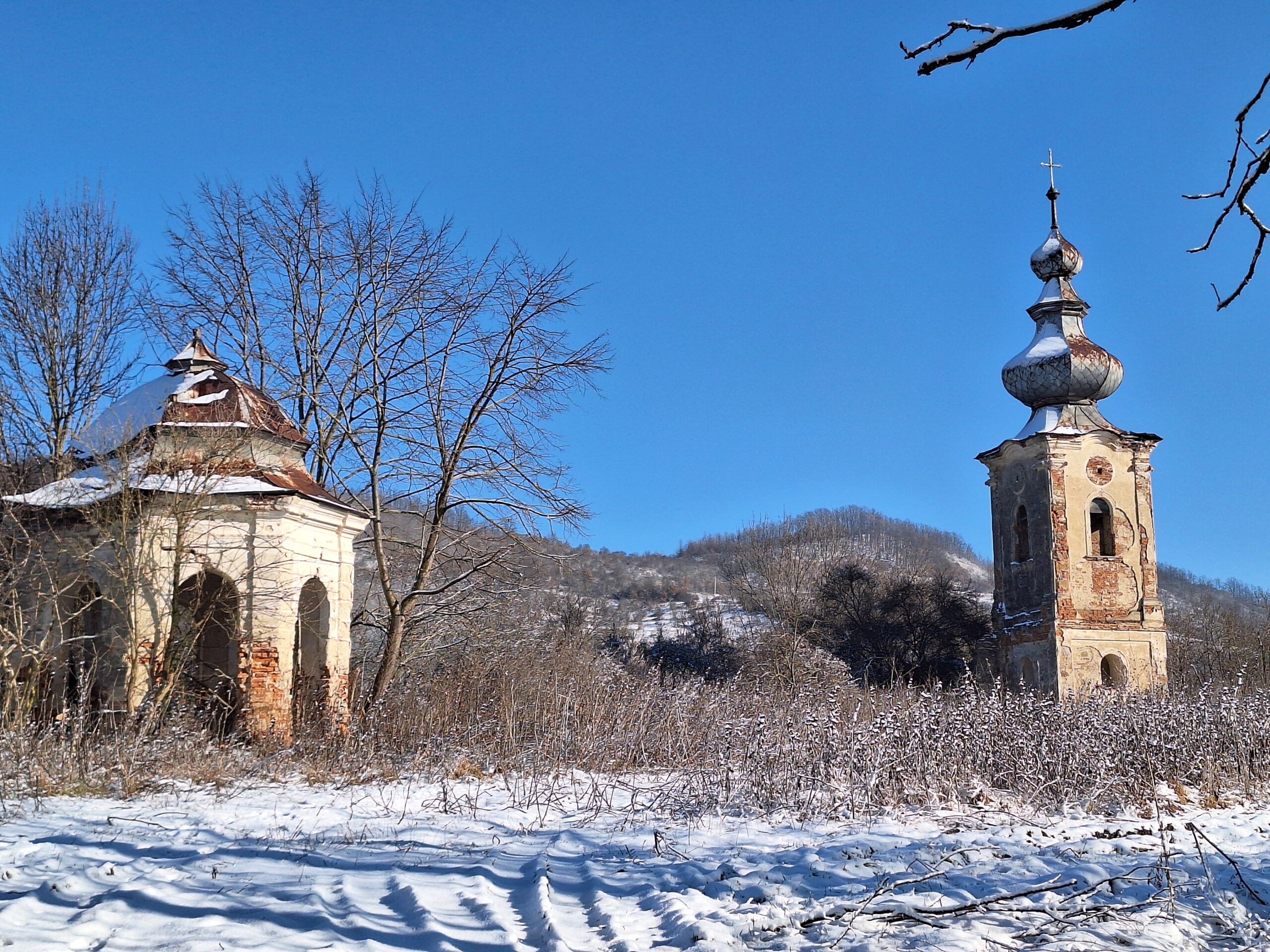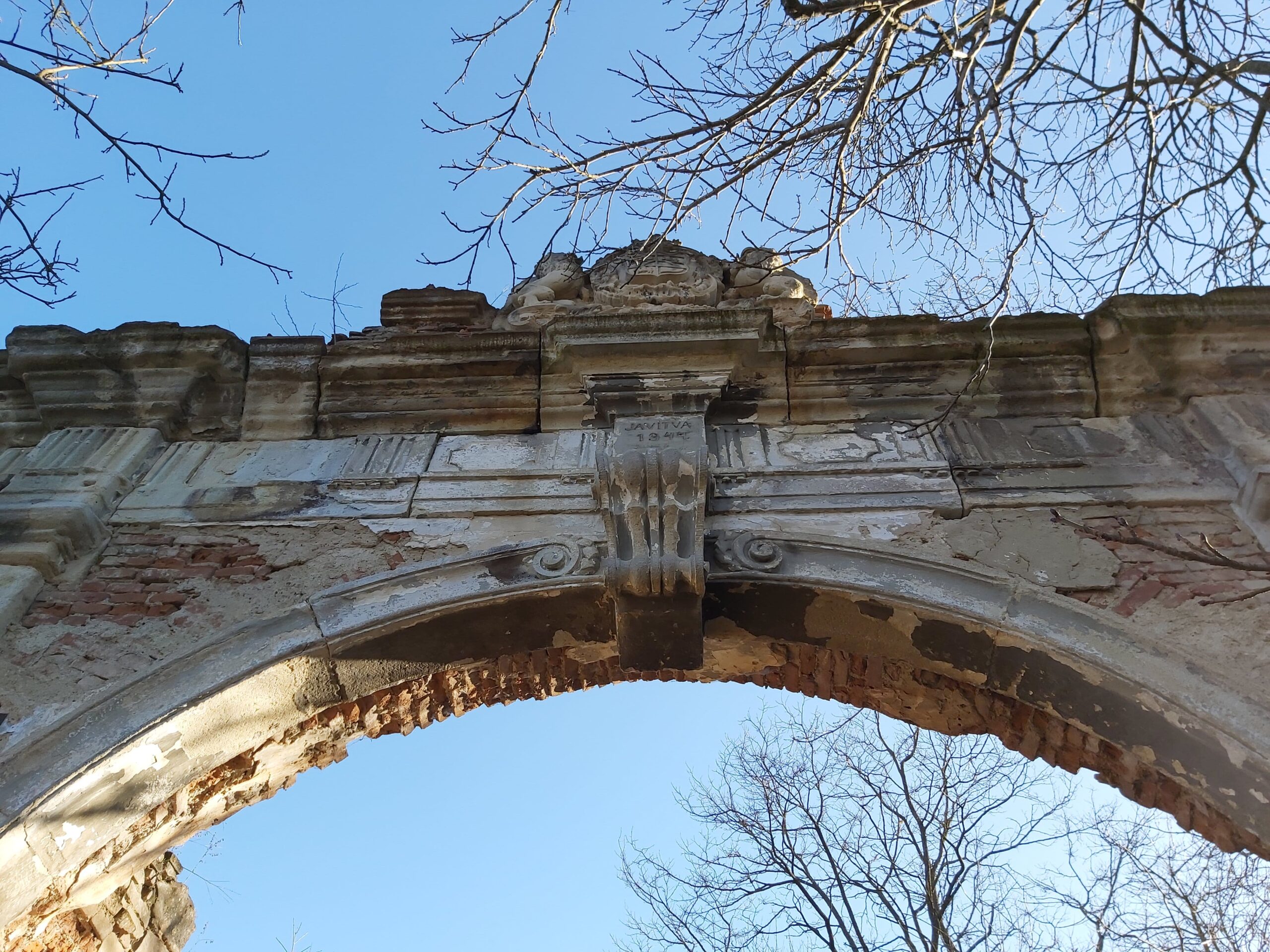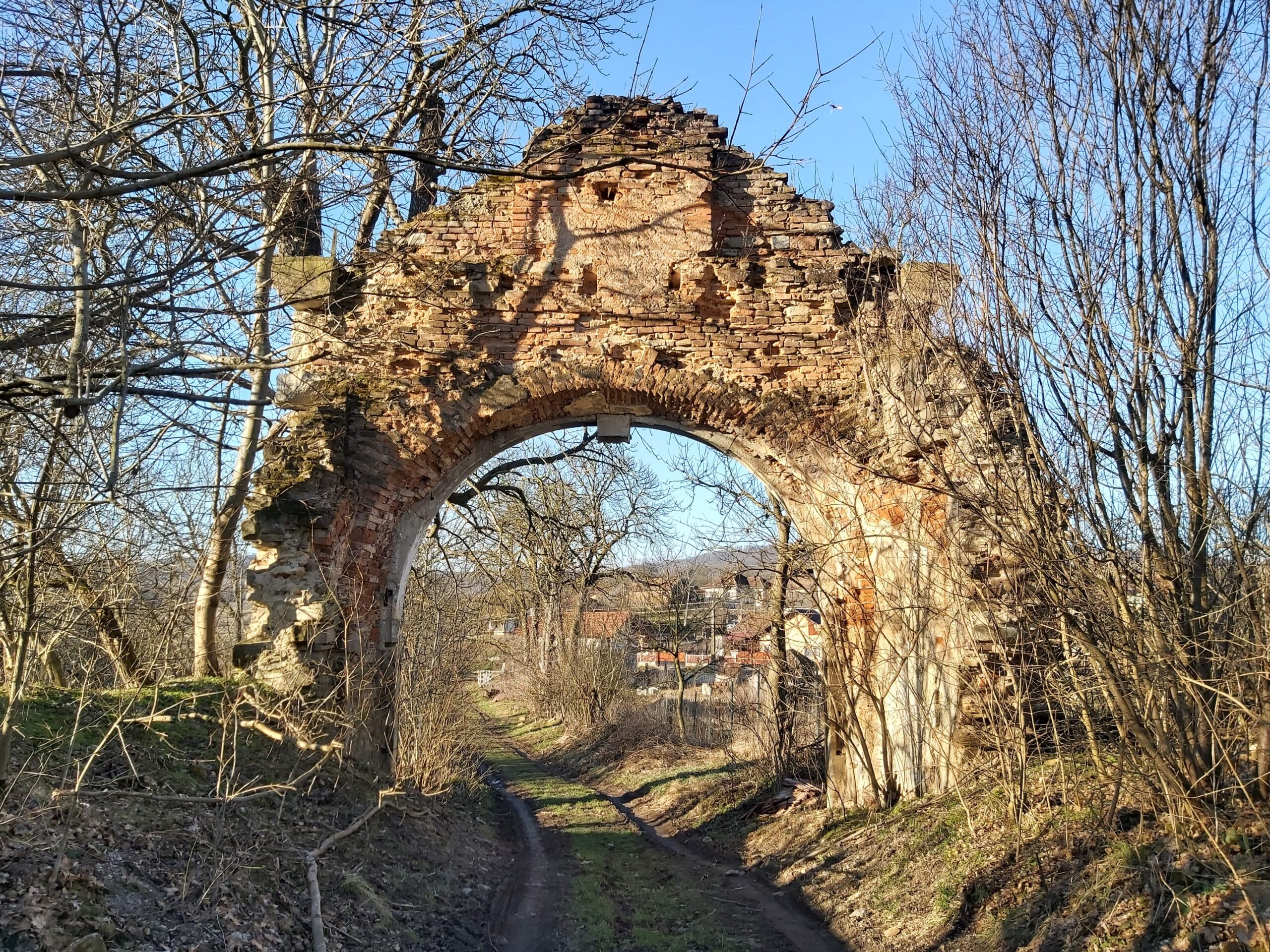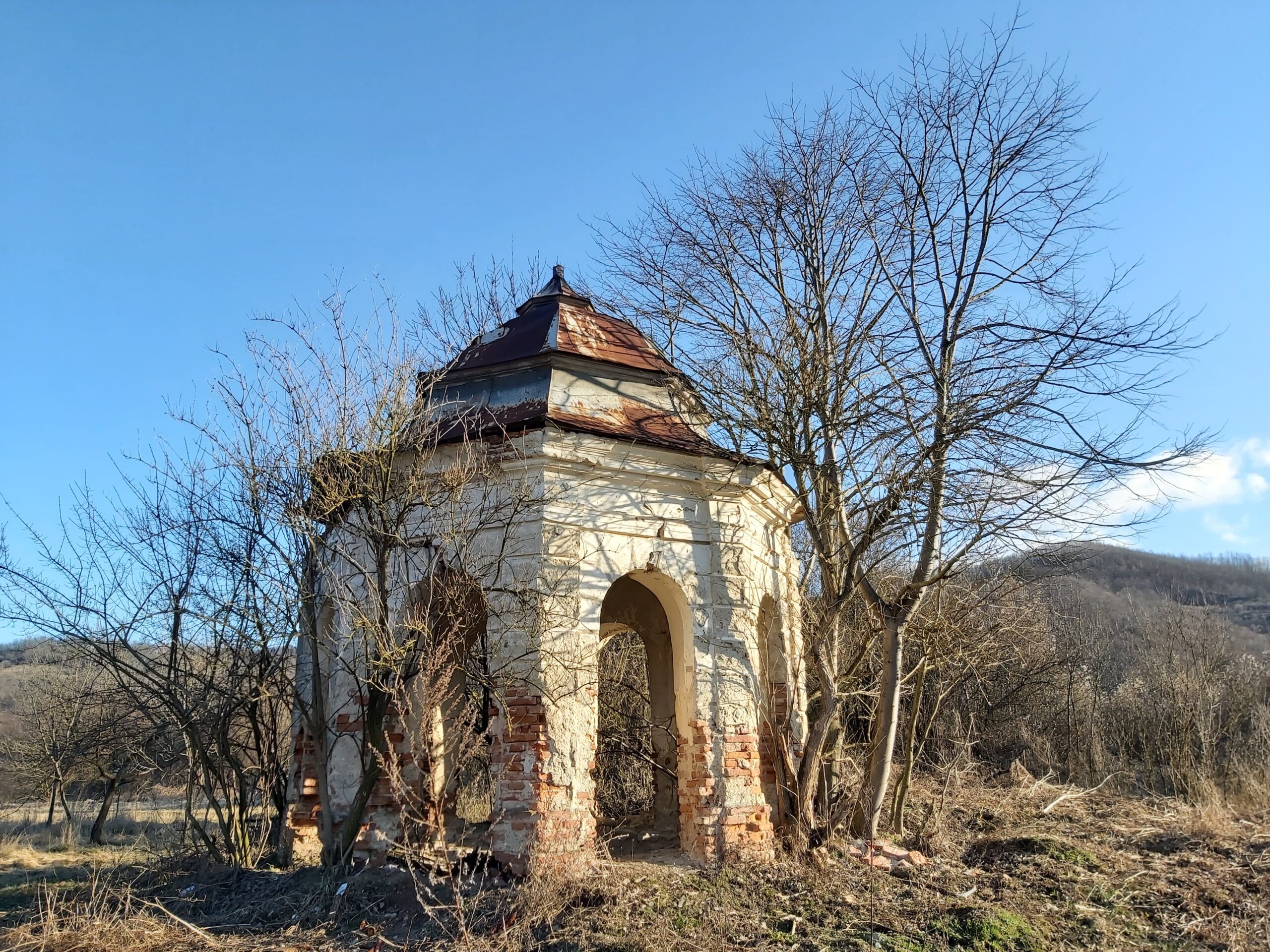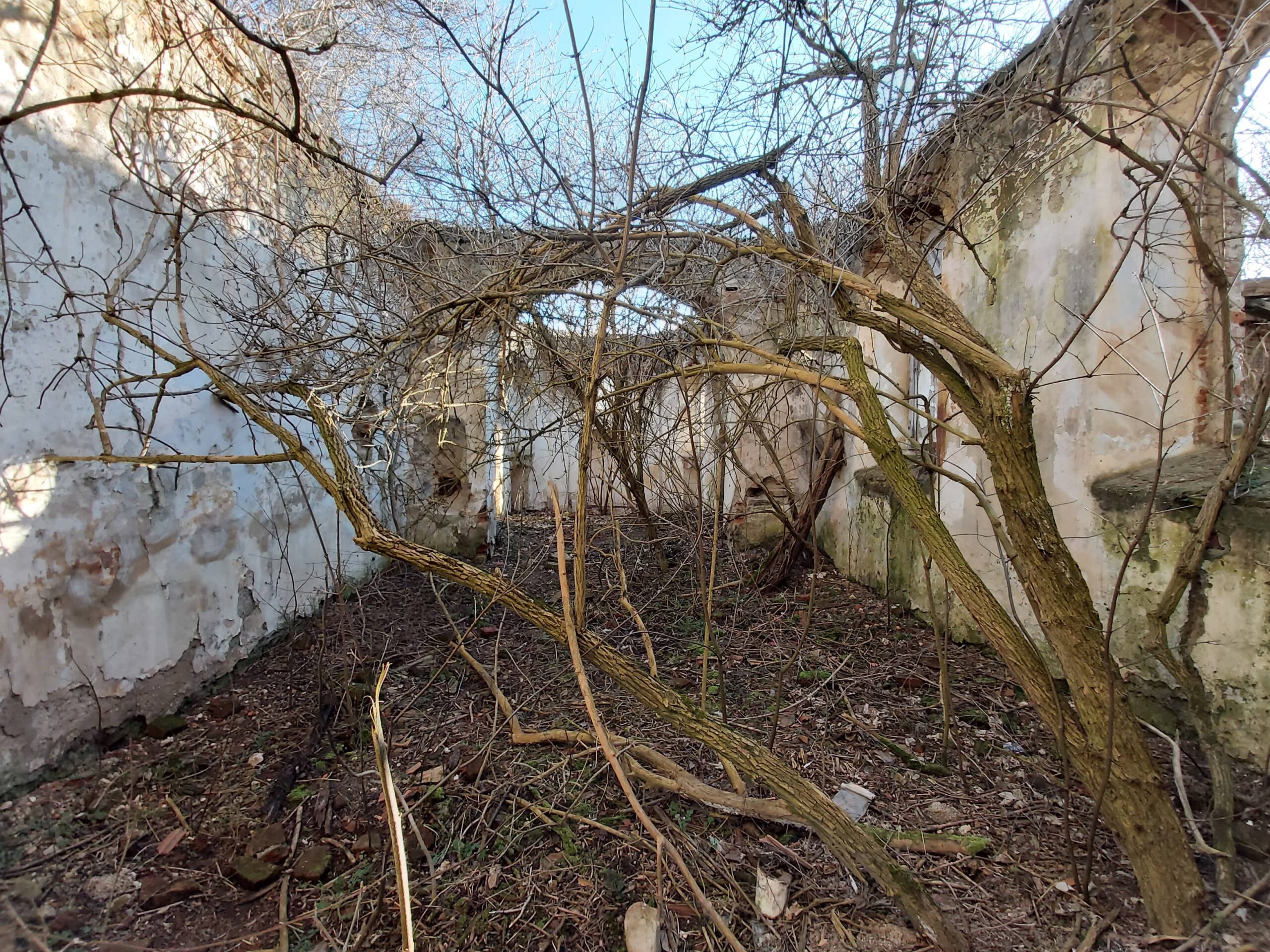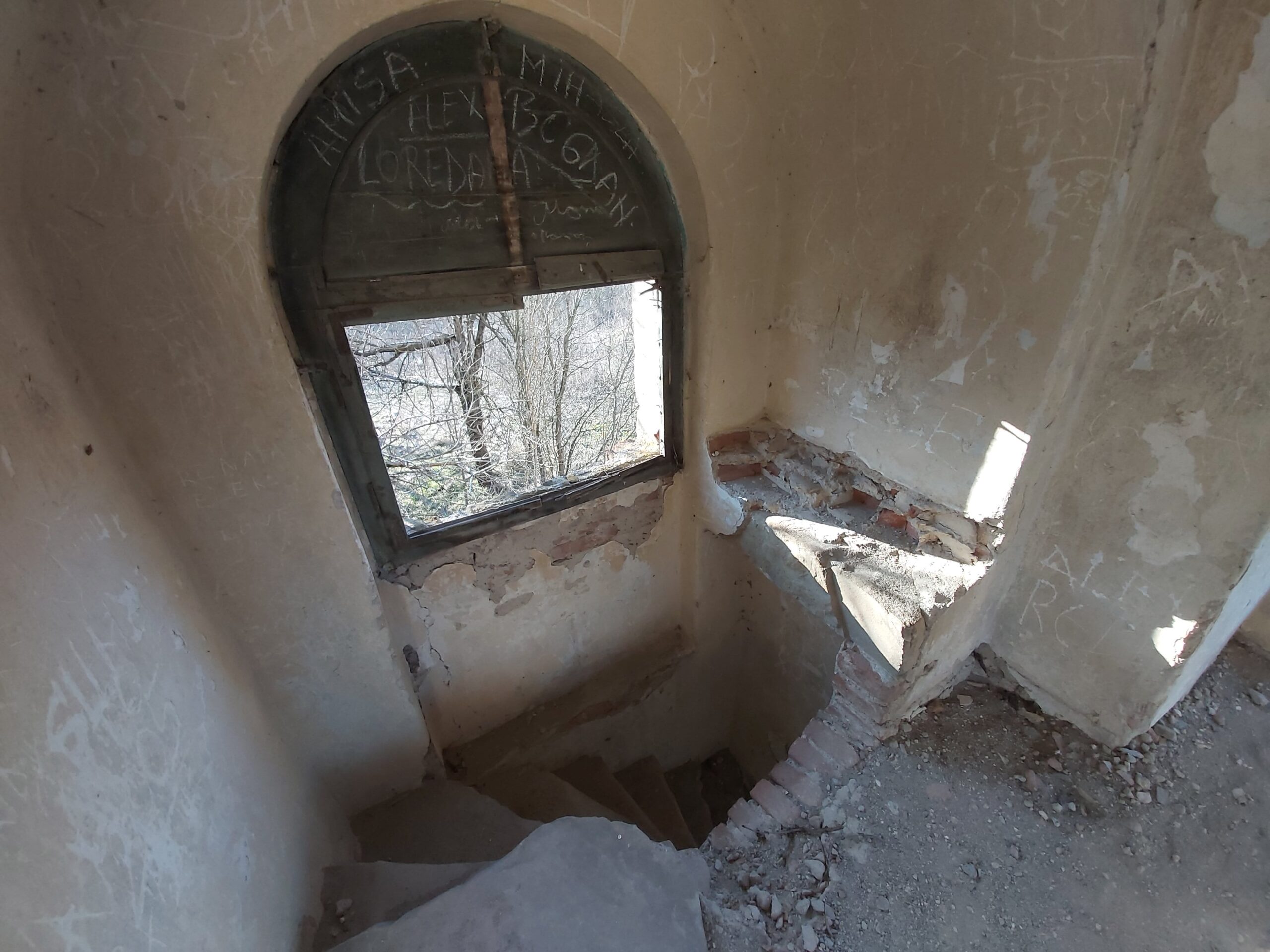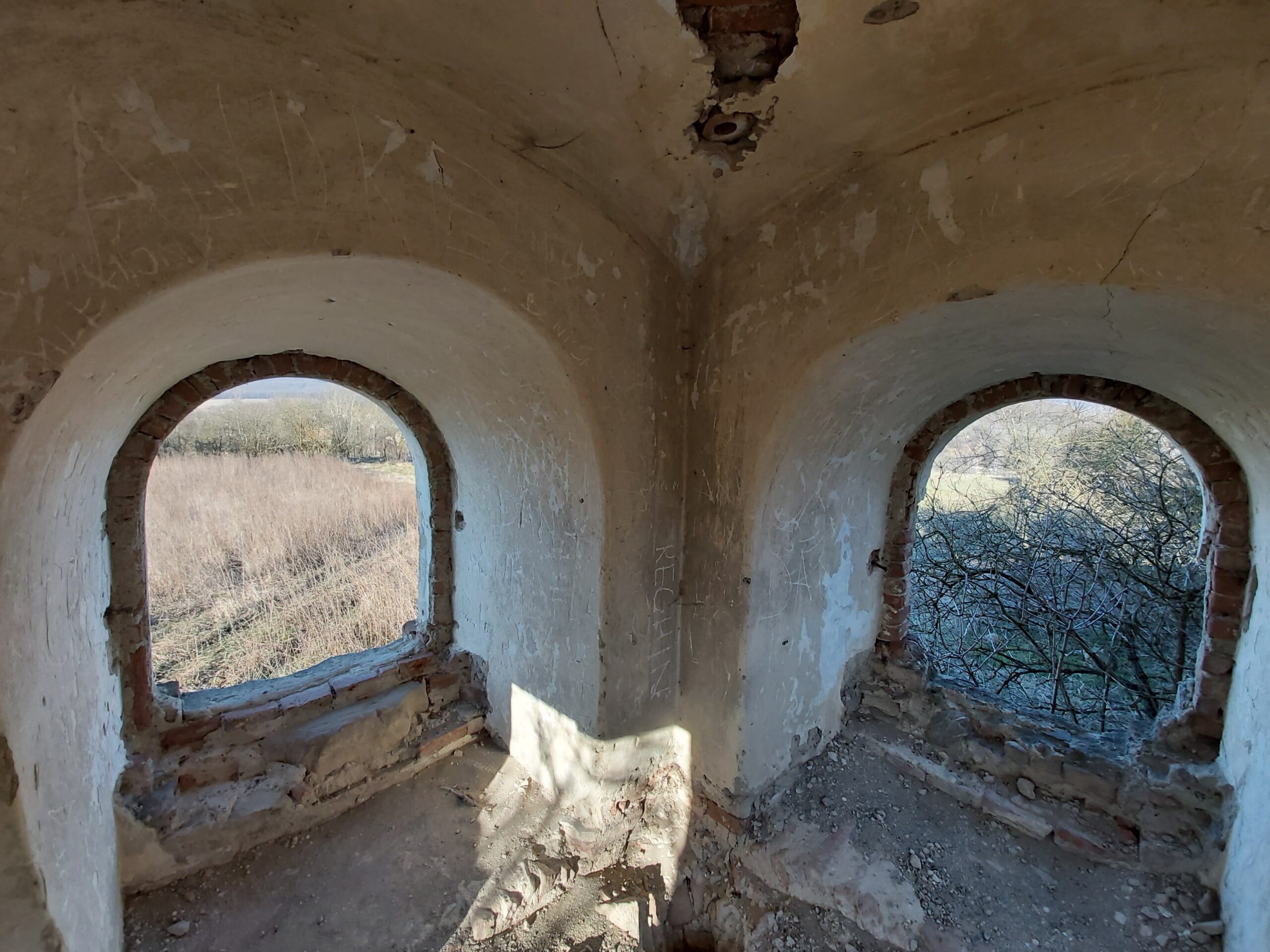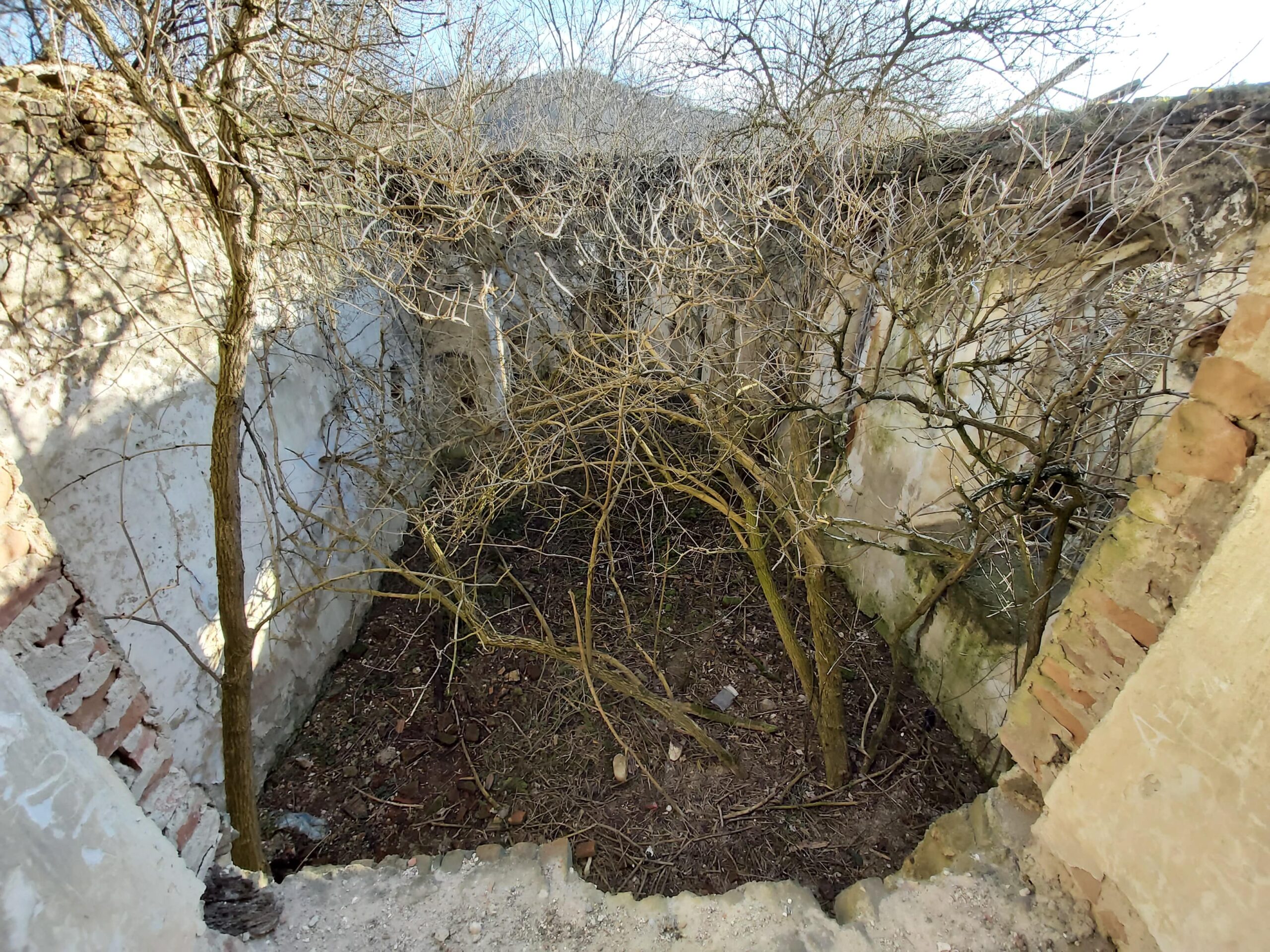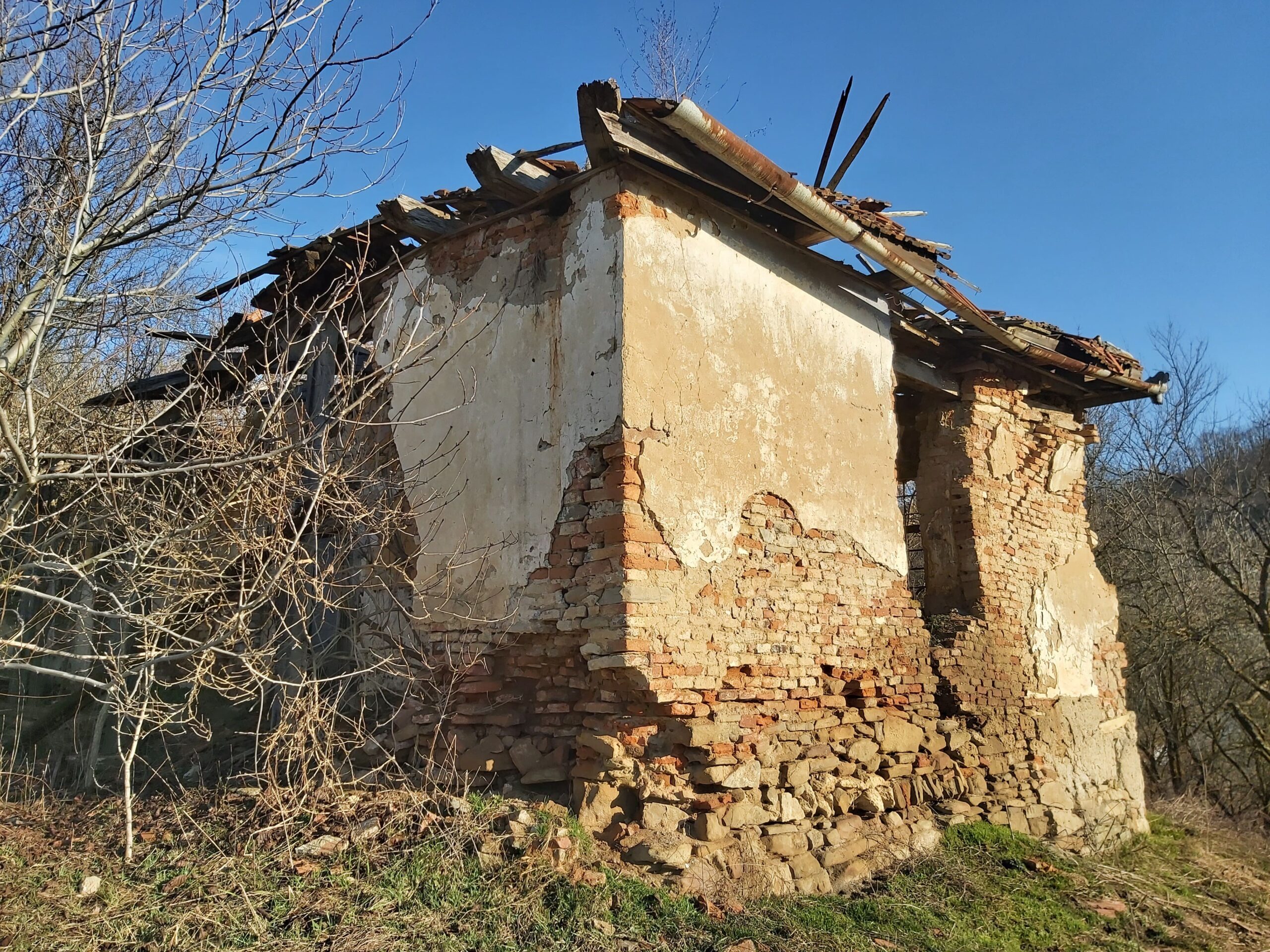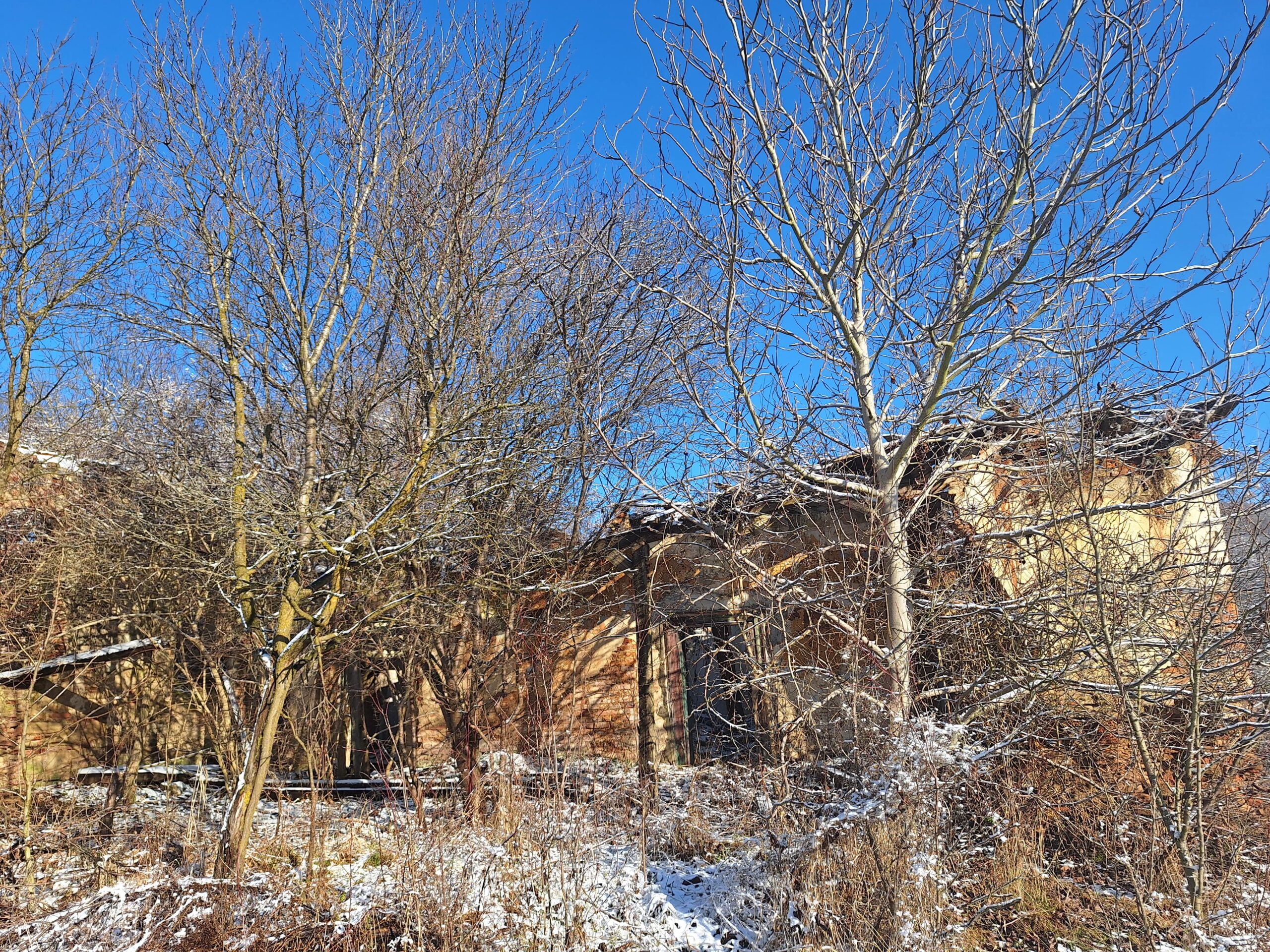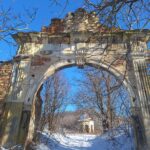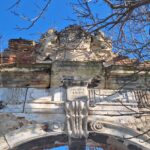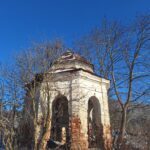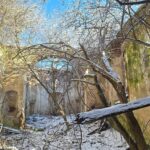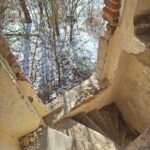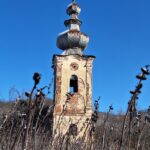Gârbou (Csákigorbó, Gorbau) – Sălaj County
Members of the Haller von Hallerstein family, one of the most influential in Transylvanian history, would turn in their graves if they would see what the once-owned estates look like today. Of the castle in Gârbou, perhaps the least known of all, only the carved gate, a French fountain full of garbage, a dilapidated pavilion, and the ruins of the chapel remain.
As indicated by the Hungarian name of the village (Csákigorbó), the Gârbou estate was initially owned by the Csáky family, later coming into the possession of the Haller family after the marriage of Imre Csáky’s daughter, Borbála, to Count János Haller (V). He was the one who, in 1766, built the mansion in Baroque style, possibly on the site of a Roman fortification. Later, the complex was completed with defensive walls and a Roman Catholic chapel (1783), along with the French fountain in the courtyard and the stone gate carved by the renowned Anton Schuchbauer, featuring the Haller family crest with two lions and the year MDCCLXVI (1766), as well as the inscription „Javítva 1944” (renovated in 1944).
The Haller Castle in Gârbou: from hostility and jealousy to revenge and punishment
Known by the villagers as „the Burg,” the castle went through a tumultuous period with the intensification of animosity between János Haller and Count Miklós Wesselényi (III), nicknamed „the Bull of Jibou” due to his imposing stature and volcanic attitude. In his book „The Bull of Jibou,” the controversial Transylvanian writer József Nyirő describes how Wesselényi, who already had political, military, and economic disagreements with Haller, also resented his „neighbor” because he married Zsuzsa Nemes, his youthful love, who later became the lover of Holy Roman Emperor Joseph II, son of Empress Maria Theresa.
On October 16, 1781, Wesselényi, accompanied by hundred of men armed with rifles, forks, and scythes, launched a siege at the gates of the castle, which he occupied in a few days. The hostile action of the count from Jibou—married in the meantime to Heléna Cserey, to the discontent of Countess Haller—did not go without consequences. He was captured in February 1785 and imprisoned for nearly five years in the infamous fortress of Kufstein. According to legend, two of Wesselényi’s children died after falling ill following the drama experienced by their father, and Zsuzsa Nemes, tormented by remorse for her actions, went to the brink of madness. But let us leave the legends aside…
The Haller Castle in Gârbou became the Jósika Castle... Then material for the houses
After Count Wesselényi was released from the Austrian prison where the famous Hungarian outlaw Sándor Rózsa was also imprisoned, he reconciled with János Haller, ushering in a long-awaited period of peace. Then, the estate came into the possession of the Jósika family, and Count János Jósika (I) built a castle in a Classicist style, especially as the old building seemed too small for his family. According to the author of the Monograph of Szolnok-Doboka County, József Kádár, at the beginning of the 20th century, the estate hosted the mayor’s office, a bank, a casino, the state public school, and a vast library with over 2,500 books inherited from the Csáky family.
After 1944, the complex was destroyed, and following nationalization, the castle became the headquarters of the agricultural cooperative. The cellar housed fruits and potatoes, but after the early 1970s, the domain was abandoned even by the communists, with the castle being dismantled brick by brick by the villagers. The elderly villagers claim that the Romanian poet Adrian Păunescu wanted to turn the castle into a nursing home, but nothing came of this debatable idea. After 1989, no one claimed the property, which was listed as a historical monument in 2010. Today, only a few stones and fragments of sculptures remain from the former castle.
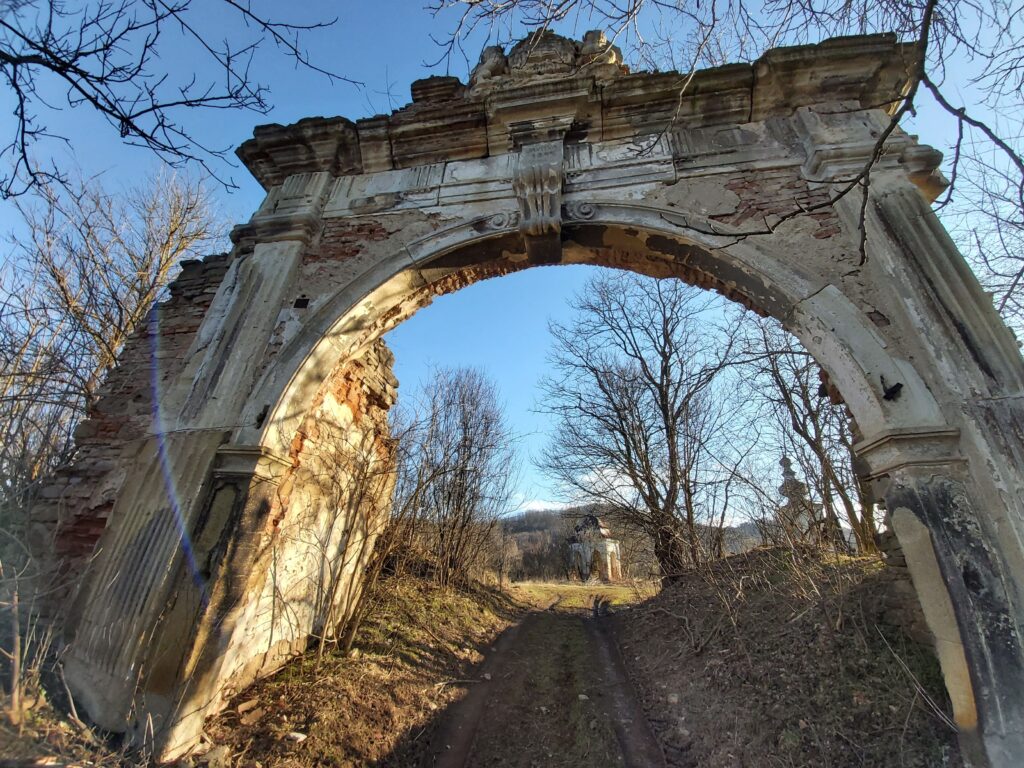
Without money for conservation (or renovation) works, the fate of the castle located halfway between Bobâlna and Jibou seems sealed. As the local and county authorities are not planning in including the site in Sălaj County’s tourist circuit, the ruins of the Haller Castle will soon lose the harsh battle with time…

